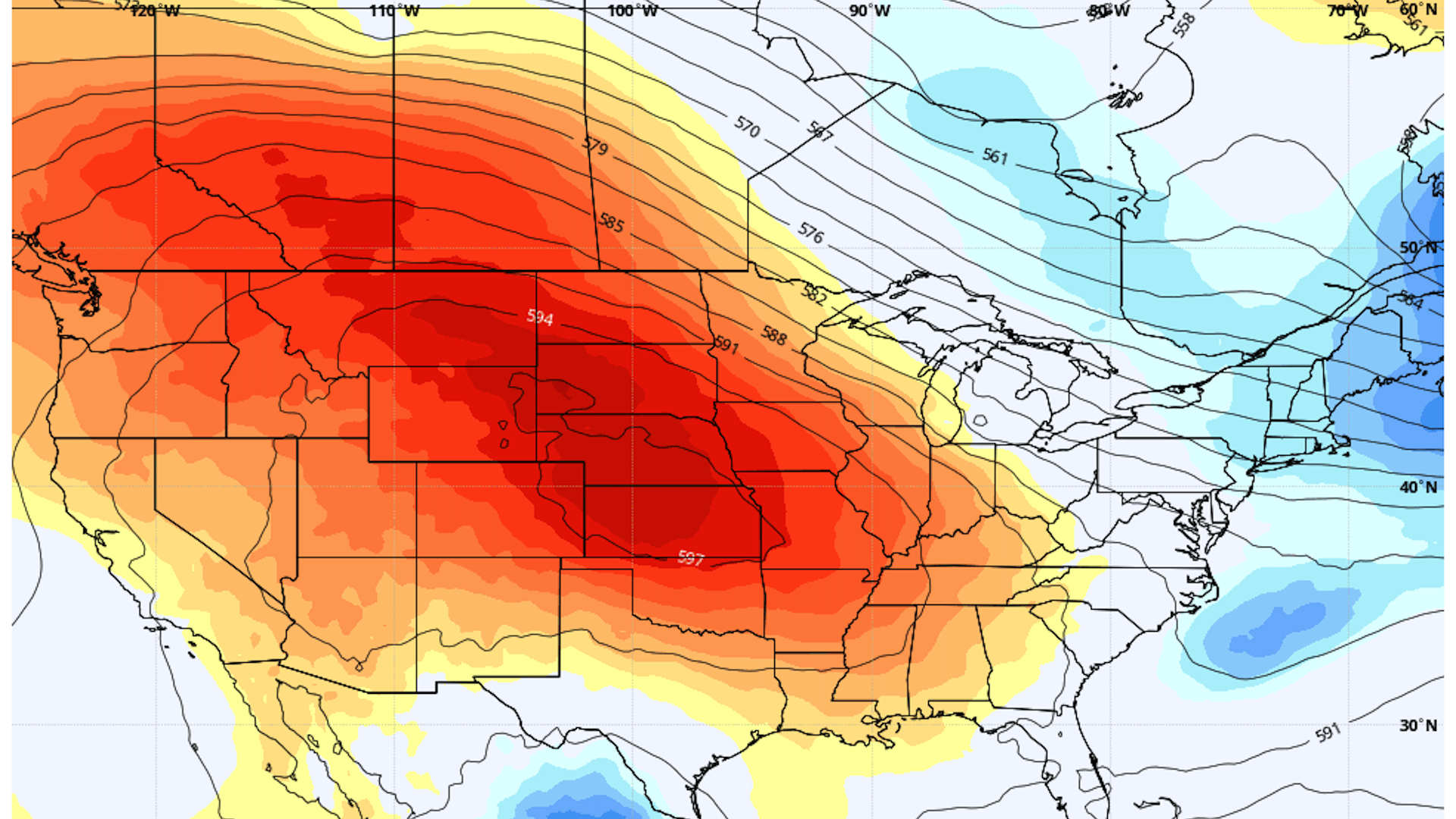Heat wave grips U.S. this week from coast to coast

- Andrew Freedman, author ofAxios Generate

Computer model projection from the GFS model showing an unusually hot airmass across the western and Central U.S. on Thursday, June 29, 2021. (Weatherbell.com)
A widespread heat wave has begun across the contiguous U.S., with at least 30 million people likely to see temperatures reach or exceed 100°F by the end of the week. At least 17 states are under heat warnings or advisories on Tuesday.
Why it matters: The hot weather, which comes courtesy of another heat dome building across the Southwest, Rockies and then sliding into the western Plains, will only aggravate drought conditions and worsen many of the western wildfires.
The big picture: The heat will be noteworthy not so much for its severity as it will be for its expansiveness, with temperatures in the 90s to low triple-digits stretching from Washington and Oregon to the East Coast at times.
Details: Temperatures will be especially heightened on Tuesday across Idaho and portions of Montana, where excessive heat warnings are in effect.
Forecast highs in northeastern Montana and northern Wyoming, an area of the country that so far this summer has seen more 100-degree days than Dallas, Texas, are once again in the triple digits.
- In fact, some locations in eastern Montana could reach 110 degrees, though thick wildfire smoke, which is related to the heat and drought in the area, could keep temperatures slightly cooler.
- As an area of high pressure in the upper levels of the atmosphere, colloquially known as a heat dome, intensifies over the Rockies through midweek, it's likely to continue pushing heat and some humidity to the north.
- A ribbon of heat is stretching from the Pacific Northwest — where large wildfires are already burning — eastward across the Intermountain West and northern Rockies, and then into the Midwest, Ohio Valley, Mississippi River Valley and Mid-Atlantic states.
- Cities including Omaha, Des Moines, Minneapolis, Oklahoma City, Dallas and Shreveport, Louisiana, are under heat advisories, with some regions placed in excessive heat watches for extreme heat that may not peak until midweek in the Midwest in particular.
- Highs in Minneapolis, for example, on Tuesday and Wednesday are forecast to be in the mid-to-upper 90s. “Extreme heat and humidity will significantly increase the potential for heat related illnesses,” the Weather Service warned.
- Overnight lows are not forecast to drop below the mid-70s in the Twin Cities, heightening public health risks by depriving the body of an opportunity to rest and cool down.
How it works: While heat waves are a normal feature in the summertime, climate change from human-caused emissions of greenhouse gases is increasing their intensity, duration and frequency.
- For example, scientists concluded that the Pacific Northwest heat wave, which broke all-time heat records in dozens of locations — including Seattle and Portland at 108°F and 115°F, respectively — was so severe it was "virtually impossible" in the absence of global warming.
- A study published Monday showed how the rapid rate of global warming today guarantees more record-shattering heat waves will occur in the coming decades.
- This event is at least the fifth distinct heat wave the U.S. will have seen so far this summer.
Catch up quick: The latest heat wave comes after the U.S. saw its hottest June on record, featuring an unprecedented heat wave in the Pacific Northwest as well as extreme heat in the Southwest.
- That heat event, plus other events that have taken place around the world this summer, have some climate scientists questioning whether their computer models are missing something fundamental, since extreme events seem to be outpacing predictions in some parts of the world.
Threat level: The heat has combined with drought conditions across the West to yield perilous wildfire risks, and more than 80 large blazes are currently burning, with more than 20,000 personnel deployed to fight the flames.
Go deeper: Study: Get ready for many more record-shattering heatwaves
Editor's note: This story has been updated to include new information and forecasts on July 27.